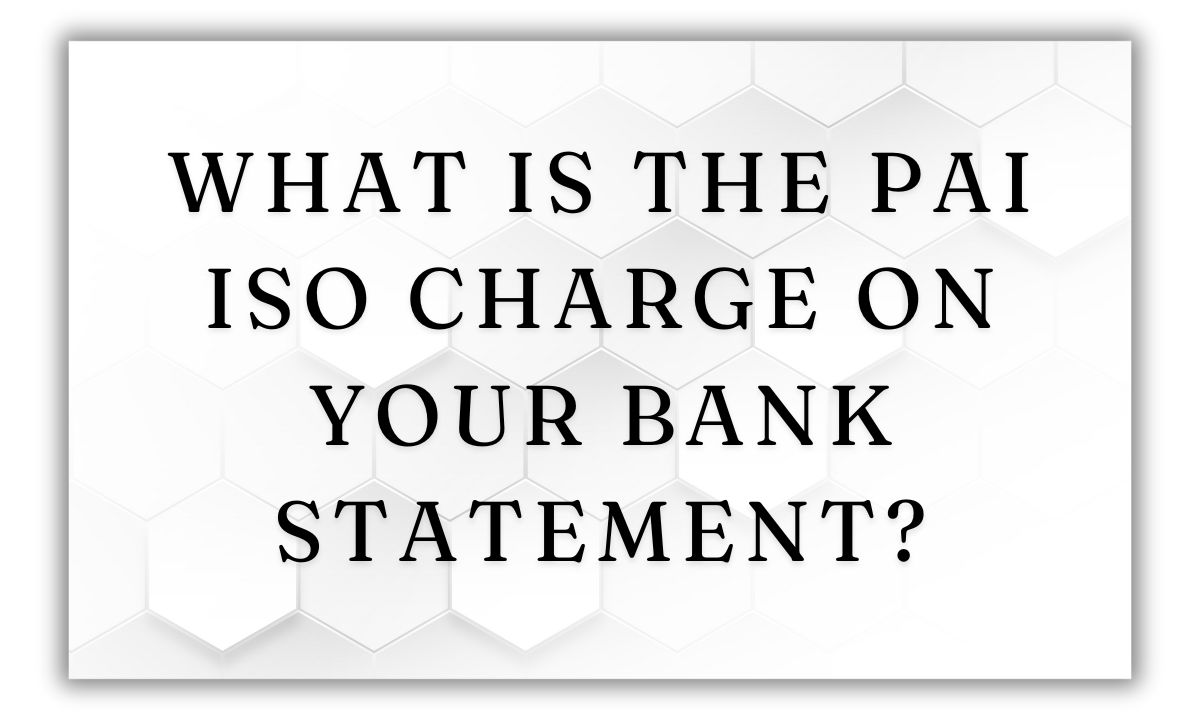Have you ever noticed a mysterious “PAI ISO” charge on your bank statement and wondered what it meant? Many Americans are perplexed by this recurring fee, which can add up over time. This comprehensive guide will demystify the PAI ISO charge, explaining its purpose, importance, and how to potentially avoid it.
What is PAI ISO?
PAI ISO stands for “Payment Account Issuer International Organization for Standardization.” It’s a standardized code used by financial institutions to identify certain types of transactions, specifically those related to merchant services and credit/debit card processing.
When you swipe your card at a store, restaurant, or online retailer, the PAI ISO charge is a small fee that your bank or credit card issuer pays to the merchant’s payment processor for facilitating the transaction. This fee covers the cost of securely transmitting data, authorizing the purchase, and transferring funds between the various parties involved.
Why is PAI ISO on my bank statement?
Although the PAI ISO charge is initially paid by your bank or card issuer, they often pass this cost along to you, the consumer. That’s why you’ll see a separate line item labeled “PAI ISO” on your monthly statement, typically ranging from a few cents to a couple of dollars per transaction.
Banks justify this practice by claiming that PAI ISO fees help cover their operational costs and the risks associated with providing convenient electronic payment options. However, many consumers argue that these charges are excessive, especially when they accumulate over multiple transactions.
What does PAI ISO mean for my bank account?
The PAI ISO charge itself doesn’t directly impact the available balance in your bank account or credit limit. However, it does contribute to the overall fees and expenses you pay for using your accounts and cards.
Over time, these small per-transaction charges can add up, potentially costing you tens or even hundreds of dollars annually if you frequently use your cards for purchases. As such, it’s crucial to understand PAI ISO charges and factor them into your overall banking costs and budgeting.
Why is it important to understand PAI ISO charges?
Educating yourself about PAI ISO charges is important for several reasons:
- Transparency: Many consumers feel blindsided by these fees, as they’re often buried in the fine print of banking agreements. Understanding PAI ISO charges promotes financial transparency.
- Budgeting: Properly accounting for these charges in your budget can help you avoid unexpected expenses and manage your finances more effectively.
- Consumer advocacy: Armed with knowledge about PAI ISO fees, consumers can make more informed decisions and advocate for fairer banking practices if they believe the charges are excessive or unjustified.
How can I avoid PAI ISO charges?
While PAI ISO charges are difficult to avoid entirely, there are some strategies you can use to minimize them:
- Use cash or debit cards for small transactions to bypass credit card processing fees.
- Opt for banks or credit cards with lower transaction fees and no/minimal PAI ISO charges.
- Negotiate with your bank or credit card issuer to waive or reduce PAI ISO fees, especially for high-volume merchants.
- Consolidate transactions when possible to reduce the total number of PAI ISO charges.
Conclusion
The PAI ISO charge is an industry-standard fee that most banks and credit card issuers pass along to consumers for electronic transactions. While individually small, these charges can accumulate over time, impacting your overall banking costs.
By understanding what PAI ISO is, why it appears on your statements, and its implications for your accounts, you can make more informed financial decisions. Additionally, being an educated consumer empowers you to explore strategies for minimizing PAI ISO charges or advocate for more transparent and consumer-friendly banking practices.
Remember, knowledge is power when it comes to managing your money effectively and avoiding unnecessary fees and expenses.
Also Read this Blog:

Lucas Steele is an experienced professional with 10 years in education. “Teachbullit” is his domain, reflecting expertise in teaching and learning.









